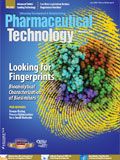Biosimilar Developers Face a Reference-Product Dilemma
Does global development have to entail multiple comparability studies?
Various countries have established legal and regulatory pathways to allow "copies" of an off-patent bio-therapeutic product to be brought to market. However, unlike small-molecule generic drugs, these large, complex protein molecules cannot be absolutely identical to the original. Instead, a large-molecule copy drug must be demonstrated to be similar to a reference product (RP) by performing a side-by-side comparison to the originator molecule. There are many challenges—legal, regulatory, nonclinical and clinical—that manufacturers must rise above to develop biosimilar products for global markets. Perhaps one of the first hurdles is choosing the RP.

Fiona Greer, PhD
It has been nearly two years since President Obama signed the Patient Protection and Affordable Healthcare Act, which provides for a regulatory pathway for biosimilar drugs through the Biologics Price Competition and Innovation Act (BPCIA) (1). The European Union actually blazed the trail for biosimilars in 2005 when it established guidelines for "similar biological medicinal products" (i.e., biosimilars) (2). Subsequently, Japan established guidelines on "follow-on-biologics" in 2009. Other countries, including Brazil, Australia, Turkey, Taiwan, Malaysia, Argentina, Mexico, Canada, and South Africa followed thereafter with many biosimilar regulatory pathways based on the EU model.
These national and regional guidelines do share a common theme: a step-wise, head-to-head comparability exercise between the biosimilar in direct comparison with the originator requiring extensive physical, chemical, and biological characterization, followed by nonclinical and clinical studies to demonstrate the same safety and efficacy profiles as the RP. All guidelines state that the same RP should be used throughout the analytical characterization, nonclinical, and clinical study stages. However, the specificity with regard to the selection of the RP differs among the various country guidelines.
For instance, many legal pathways, including those of the three leading members of the International Conference on Harmonization (ICH) (i.e., the EU, Japan, and the US), require that the RP chosen is one which is already approved in the relevant country or region of the application. The EMA guidelines state that the RP used must be authorized in the EU on the basis of a complete dossier. Some data from comparability studies with a RP from outside the EU may be acceptable, but only for supportive purposes.
In the US, section 351(k) of the Public Health Safety Act, added by the BPCIA, requires comparison with a single RP which has been approved under the normal section 351(a) with reference to prior findings on safety, purity, and potency. Interestingly, the much anticipated recent (February 2012) draft guidances from FDA on both scientific and quality considerations in demonstrating biosimilarity to a reference protein product do suggest a degree of flexibility (3). They state that in certain circumstances, and with prior consultation, a sponsor may seek to use data derived from animal or clinical studies using a non-US-licensed comparator product. However, in such cases adequate "bridging data" to a US-licensed RP must be provided. This topic is actually discussed in detail in the accompanying Q&A document, in section 1.8 (3).
The World Health Organization's Guideline on Evaluation of Similar Biotherapeutic Products, however, allows national regulatory authorities in countries without the particular approved product to accept a Reference Biological Product (RBP) from another jurisdiction provided that it has a well-established regulatory framework (4). Looking to Health Canada's guidelines, there is some flexibility in the source of the RP, provided that several conditions are met, such as the product being from an ICH member country.
So, in effect, any biosimilar manufacturer who proposes to market its products globally—and there are several with this stated aim—faces the prospect of multiple, separate studies that compare the biosimilar with different sourced RPs from the targeted markets. Sourcing the appropriate RP material from one market alone is a difficult and costly exercise because multiple lots manufactured over a long timeframe are required to establish changes in quality attributes.
The issue is further complicated by the fact that most originators are already manufacturing in various global locations to provide for multiple markets. Their reference products will have been established and authorized using existing comparability guidelines (e.g., ICH Q5E Comparability of Biotechnological/Biological Products) and may in fact be highly similar in different countries, although licensed by different authorities. However, the biosimilar manufacturer has no way of knowing this.
Is there a case for regulatory flexibility here? I think not where the legal pathways are already established. Neither do I see the possibility of a single global RP recognized by and acceptable to all regulatory authorities. Although such options may make sense scientifically, there are too many obstacles. For instance, who would choose, source, authenticate, stock, and supply such reference material? Originator companies would not likely volunteer to provide this service.
As an analytical scientist, I think that conducting multiple physical/chemical studies with multiple RPs makes scientific sense. Carrying out such work may be costly but also provides key knowledge regarding the originator product, including quality changes tied to the product's life cycle and manufacturing location. Tracking the originator product and building a database of knowledge is therefore extremely important. However, the clinical and nonclinical issues are a different matter. Is it ethical to duplicate animal studies and clinical trials with the same biosimilar but "different" RPs?
The biosimilars industry is discussing this exact concern. Several suggestions have been mooted, mostly by companies aiming to streamline development of products targeted at more than one country or region. Proposals have included using just one RP from one ICH region but adding bridging studies to RPs from other ICH regions, or using different RPs up to Phase I and then using only one RP for Phase III. Other ideas involve recommending that the regulatory agencies collaborate to determine "sameness" of originators product in different regions. However, for any change to happen, the existing legal guidelines would need to be altered—and that is not a quick fix.
In the meantime, there appears to be no alternative. Global biosimilar development companies must adhere to the legal requirements of the individual countries where they seek authorization, no matter how costly and time-consuming it may be to repeat biosimilarity comparability studies.
Fiona Greer, PhD, is the global director of BioPharma Services Development at SGS M-Scan, fiona.greer@sgs.com
References
1. US Public Law 111-158, Patient Protection and Affordable Healthcare Act (March 2010).
2. EMA, Guideline on Similar Biological Medicinal Products (CHMP/437/04), (Sept. 2005).
3. FDA, Draft Guidances for Industry: Scientific Considerations in Demonstrating Biosimilarity to a Reference Product; Quality Considerations in Demonstrating Biosimilarity to a Reference Protein Product; and Biosimilars: Questions and Answers Regarding Implementation of the Biologics Price Competition and Innovation Act of 2009 (Feb. 2012).
4. WHO, Guideline on Evaluation of Similar Biotherapeutic Products (October 2009).
